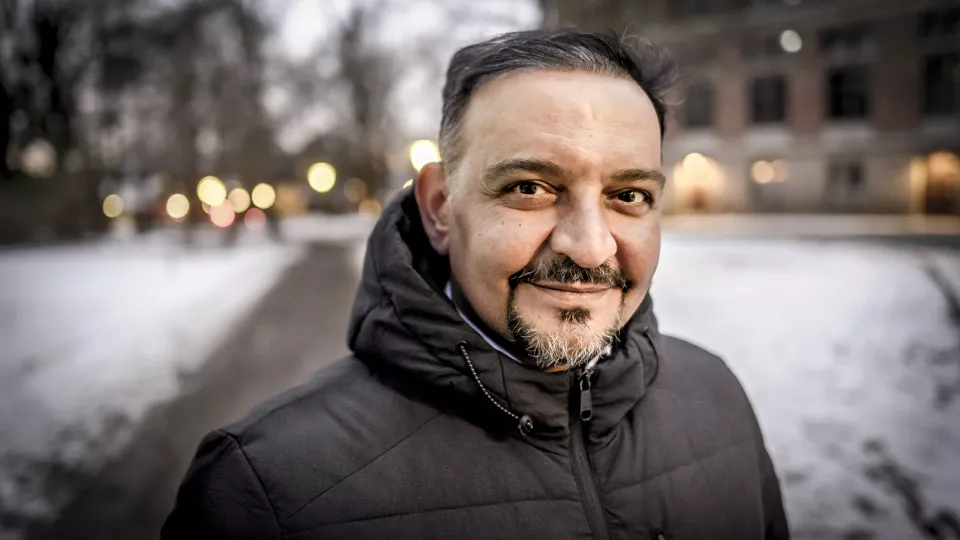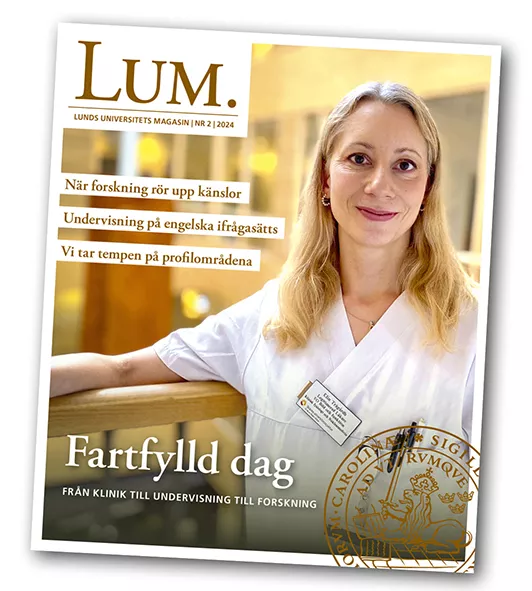Anas Al Khabour steps briskly into the empty foyer at LUX after giving a digital lecture on the cultural heritage of Syria for students of digital archaeology. During his years in exile, he has worked on documenting Syria’s cultural heritage. With a commission from UNESCO, he has gathered photos and documentation of archaeological artifacts that were destroyed or stolen to be sold on the black market.
“IS has not only destroyed indiscriminately. They have also illegally dug up numerous relics in order to get to artifacts that could be sold to finance their war.”
Around 6000 artifacts from his museum by the Euphrates River in Raqqa, which is in Mesopotamia, have disappeared or been destroyed.
Went on excursions as a child looking for relics
Growing up in the cradle of civilisation awakened an interest in archaeology and cultural heritage, which are the twin pillars of his current research.
“As children, we used to go on excursions in the local hills, where there were 5000-year-old relics. Once, I found shards of a pot…”
The area also attracted many foreign archaeologists and a curious Anas Al Khabour used to follow their excavations.
“That was how I realised that being an archaeologist was an occupation – and that’s what I wanted to be!”
And he became that via studies at Damascus University and a Master’s in Madrid. In 2003, he returned to Syria and got a job at the National Archaeological Museum in Raqqa. He worked there as museum director for five years.
“I had a very good life in Syria with a house, family and friends.”
Raqqa was occupied by IS
However, when war broke out, Anas Al Khabour had already left the country to work as a cultural attaché at the Syrian embassy in Madrid, at the same time as he was writing his thesis.
Raqqa was occupied by IS, which unleashed a reign of terror between 2014 and 2017. The city became Islamic State’s “capital” and was subjected to enormous destruction during the conflict. Anas Al Khabour did not have to experience this personally, but his mother, brother and friends were still there. And he has not yet dared to go back. It is now six years since he last saw his mother.
“It will be a long time before it will be like it was before the war, but life is slowly getting back to normal for my mother and brother. Of course, anything is better than IS,” he says.
Six months ago, the inhabitants of the city, which is about the size of Malmö, got their electricity supply back. Clean water is running in the taps again.
Created database to prevent black market trading
Since the war started and it became clear that IS were also ruthless regarding Syria’s rich cultural heritage, Anas Al Khabour has fought in various ways to preserve it. In 2017, he was one of the driving forces behind the Focus Raqqa project.
Together with archaeologists from Germany, France and the Netherlands, he created a database, which via Syrian authorities and Interpol was disseminated to customs, museums and police forces worldwide to prevent black market trading. The commission was from UNESCO, as Syria has six sites on the world heritage list.
“It is now almost impossible to sell archaeological artifacts from Raqqa”, says Anas Al Khabour.
During the conflict there were people in Syria who took enormous risks in the warzone to document the historical sites. Anas Al Khabour considers that Syrian cultural heritage can be important in the peace process.
“Cultural heritage means a great deal for Syria’s identity and is something we all share. It can help to reconcile groups that were previously in conflict”, he says.
After Anas Al Khabour completed his thesis on classical culture’s contacts around the Mediterranean, and finished his postdoc and came to Sweden when he got a job working on Bronze Age excavations, which led to him moving to Halmstad in 2017.
“It was a very enjoyable job and gave me a good network of Swedish researchers and a number of universities.”
He still lives in Halmstad with his wife and two children. During his career, each step has led to new opportunities and he has advanced by jumping from one post to the next. A research colleague at the University of Gothenburg told him about the chance to apply for the Scholars at Risk position and that led to him working for 18 months in Gothenburg.
Found academic safe haven due to SAR
Scholars at Risk (SAR) is a global network involved in finding academic safe havens for threatened researchers and promoting academic freedom. When the SAR period in Gothenburg came to an end it was still near impossible to work as an academic in Syria. Libraries have been destroyed and material and books have been burned or stolen. University campuses are often monitored by the military. The solution, with assistance from SAR, was to come to Lund.
“Here, I am teaching cultural heritage and have a digital archaeology project to document Syria’s cultural heritage and create digital models of lost sites and artifacts.”
He sees many opportunities and enjoys being in Lund, even though he has only experienced teaching and research during the Covid-19 period. He would like to move here, but his children have no wish to leave their schools and friends in Halmstad. And one day in the future, Anas Al Khabour wants to return to his homeland.
I hope to do that. I want to be involved and help to rebuild the country.



